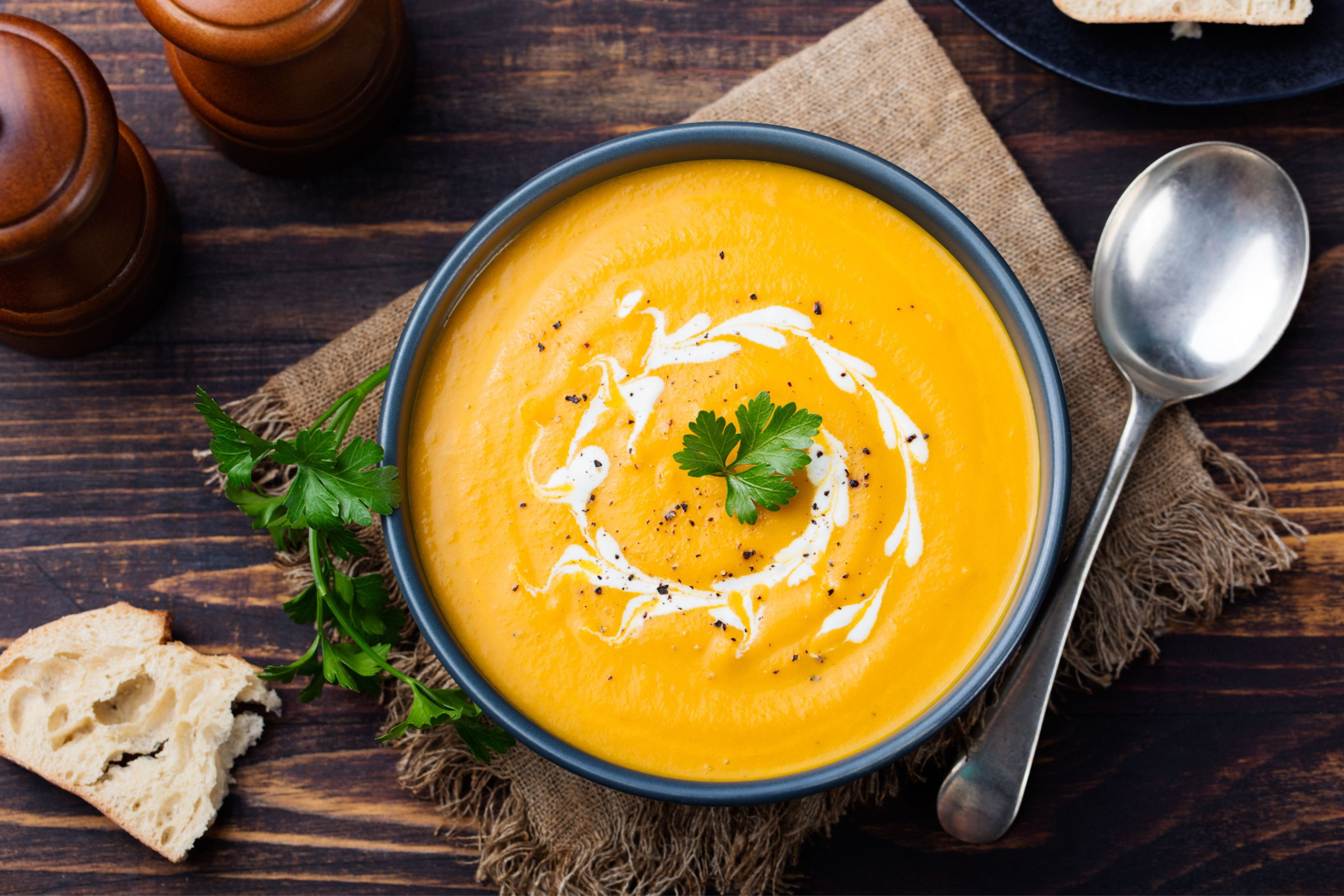It’s soup season. When the weather is cool, the sweatpants have made their annual debut, and there are more leaves on your lawn than in the damned trees, it’s time to put the soup on. And while you may already have your standard favorite easy soup recipes on standby, this technique will help you master the art of creamy soup. With just a few simple steps, you’ll be able to turn basically anything into a piping-hot bowl of deliciously silky, savory warmth. So grab a spoon and enjoy your creamy vegetable soup.

Choose and prep your ingredients
Obviously, the first step in the process of making your cream soup is to decide on ingredients. Most standard vegetable soups start with a mirepoix, which is a very traditional starter for many soups and sauces containing onions, carrots, and celery. To this, other ingredients can be added, of course, but the cooking of mirepoix is a typical first step. In a pureed vegetable soup, you’ll need both your main flavor(s) as well as aromatics to help that flavor shine and create depth. Aromatics are savory vegetables that help support the main ingredient, such as onions, shallots, leeks, and garlic. Your main star may be positively anything you wish; just think of all of your favorite creamy soups — potato, mushroom, tomato, pea, butternut squash, pumpkin, the list goes on and on.
Start your soup by cleaning, peeling, and chopping the vegetables you’re going to use. Try to keep everything roughly the same size so that they cook evenly, but there’s no need for beautiful knife cuts as everything will be pureed later.
Caramelization = flavor, but don’t overdo it
When sautéing vegetables for a soup, the intensity and sweetness of their flavor are entirely in your hands. To sweat your vegetables means to cook them in a fat such as butter, oil, or even bacon grease, until they have only just softened, and not browned at all. The longer you cook and brown your ingredients, the more caramelized, and therefore sweeter, they will become. Consider your ingredients and how subtle, or intense you would like them to be, and then saute your vegetables accordingly.
Spice it up
Your next step for your soup will be to add additional spices and herbs, should you choose. Here, you’ll mix in things like spice blends, bouillons, and dried herbs. This is also when you would add wetter ingredients such as tomato or anchovy paste, pesto, or jarred chilis.
But do keep in mind that you should always be seasoning with salt and pepper throughout the entire process, tasting as you go along.
Get it wet
Once your spices are added, pour in your liquid. Stock or broth are the most common choices here, but water will work just fine in a pinch. For creamier soups, milk and cream can also be added at this stage.
Add just enough liquid so that your ingredients are covered — if you add too much, your soup will have a thinner, runnier consistency. Allow this to simmer until your vegetables are soft.
Blend baby, blend
When your ingredients are soft, the easiest way to puree them is directly in the pot using an immersion blender. Of course, you can also transfer your soup to a countertop blender, working in batches if your blender is on the small side. Either way, be very careful with all that hot soup flying around.
If you want to add an extra silky texture to your soup, at this stage you can also drizzle in a bit of oil or butter. This added effort will give you a velvety consistency and depth of flavor to your soup.



